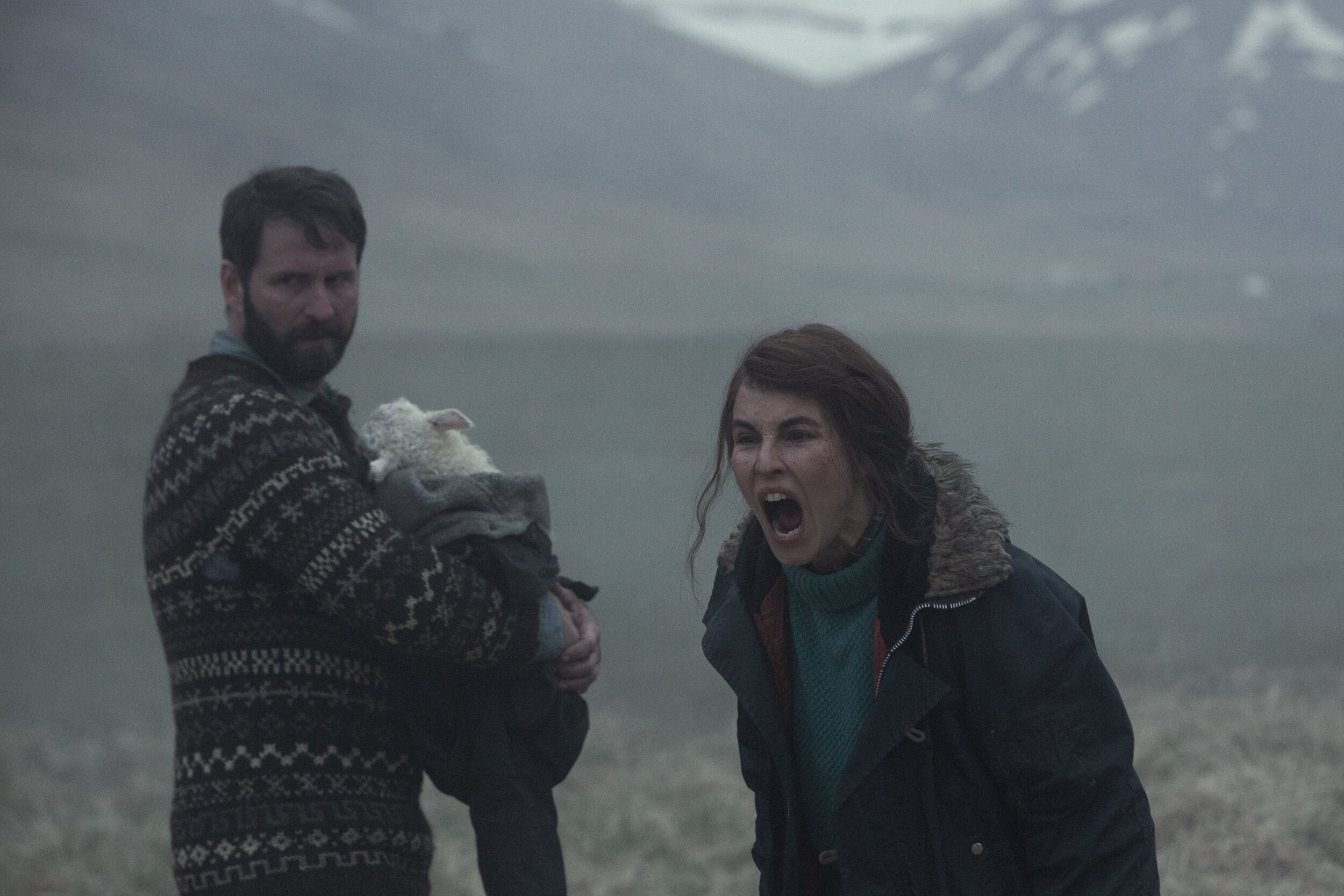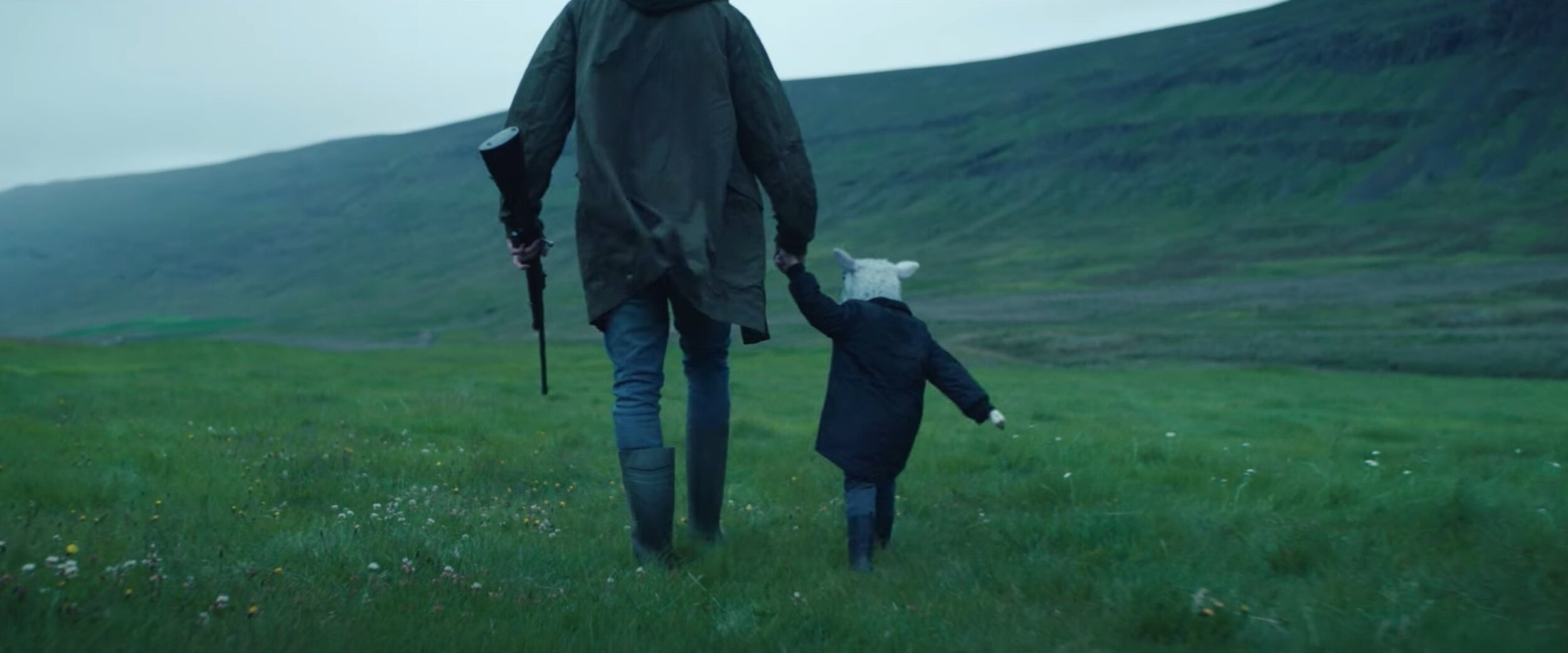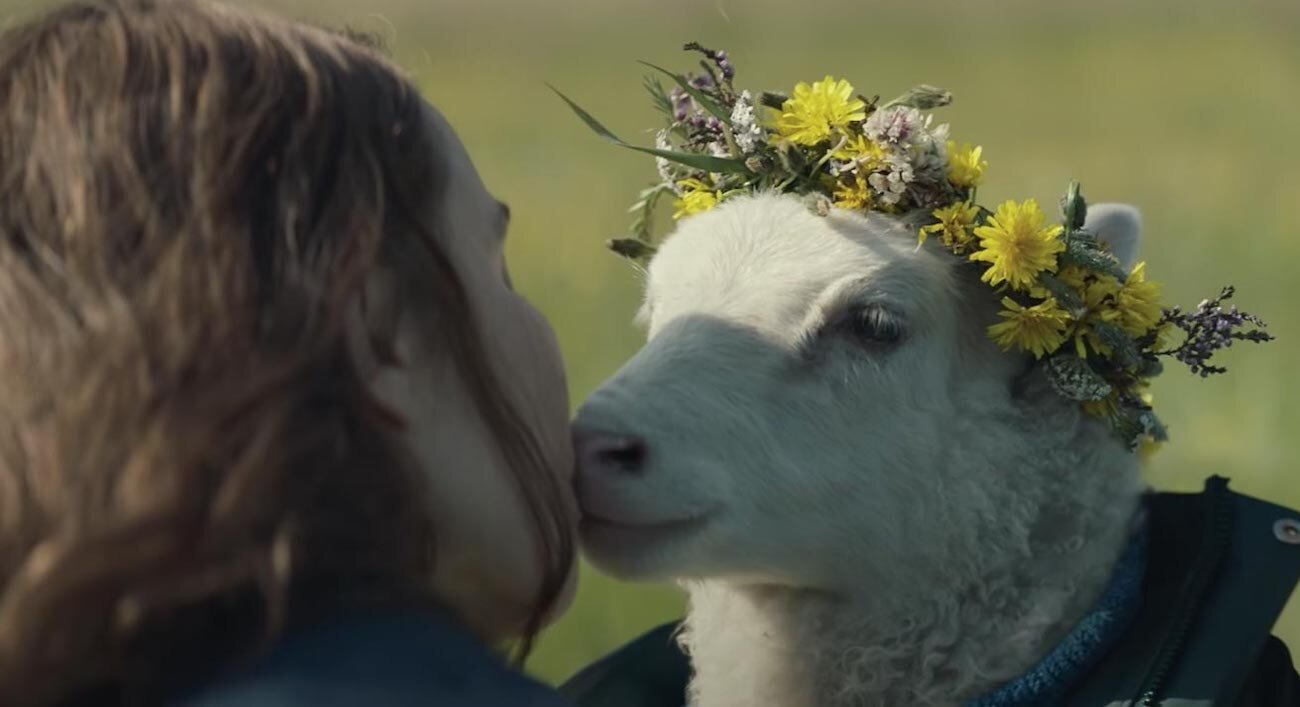'Lamb' Review: An Unapologetic Barnhouse Horror
A24’s latest farmhouse feature is a film you can chew on— and one that bites back.
After the near back-to-back releases of Kelly Reichardt’s “First Cow” and Michael Sarnoski’s “Pig,” it’s difficult to tell where “Lamb,” directed by Valdimar Jóhannsson, fits in with the broader narrative of farm animal movies graciously trotting into theaters. It’s equally challenging to say where the film stands in what people online have dubbed the “Old MacDonald Had a Farm Cinematic Universe” (OMHAFCU). For starters, not only is “Lamb” the second farm critter feature from A24 (following First Cow), but the titular lamb at the center of the film might not even be A24’s biggest farm animal character, considering Black Phillip’s stronghold on that title. For all these reasons, the release of “Lamb” and its promotional material has been chortled over social media through the film industry’s game of telephone, with its unique premise slightly overshadowed by its coincidental inclusion within the OMHAFCU. And all this for absolutely no good reason: the film is a maddening stroke of genius.
With very few words spoken and strikingly hypnotic imagery, “Lamb” holds the gaze of an audience with a haunting stillness. The quiet nature of the film allows room for contemplation--something that many horror films either do not utilize or fail to take advantage of. The way Jóhannsson weaponizes tenderness, meditation, and folklore is a masterclass on subversion. The film begins with the muffled stomping of sheep as an undercurrent of wind gusts in whispered howls. We linger on more shots of animals for a while longer, without even a trickle of humanity seeping through the barnyard cracks. There is something eerie about a herd of domestic sheep without a domesticator in sight; it's an image that hands power back to these animals, and perhaps reminds us that the power was always theirs to begin with.
Finally, after some time, humankind intrudes in the form of María and Ingvar, a pair of married Icelandic herders portrayed by Noomi Rapace and Hilmir Snaer Gudnason, respectively. Later in the film, we learn of the tragic circumstances hovering above the couple’s life; a child taken away from them, either unborn or deceased. For now, though, similar to our introduction to the livestock, they don’t speak. Only when one of their sheep gives birth to a rather peculiar looking offspring does the couple shakily utter their first lines of the film. Audiences aren’t shown the form of the lamb brought into the world, the entity creating the awestruck expressions on María and Ingvar’s faces, but for those who’ve seen the trailer or been witness to the nagging online discourse surrounding the OMHAFCU of it all, they know exactly what the couple is looking at: a half-lamb, half-human hybrid who they name Ada.
Contrary to Ada’s hybridity and the shocked faces of our protagonists, there is no moment of body horror within the film. Instead, Ada is shown with sensitivity and compassion. She’s just kind of...cute. The full view of the child isn’t shown until about halfway through the film once she has matured more and is able to walk on two legs. For a good portion of the film, while baby Ada is being nursed, the filmmakers cleverly (and somewhat out of respect for the character) have her swathed in a blanket. With the way the film approaches Ada, there is nothing truly horrific about her or the situation, regardless of the marketing’s insistence on slapping “horror” onto the press materials. She is not a monster nor is she a freak of nature. Even when the couple reveal Ada to Ingvar’s brother, Pétur (Björn Hlynur Haraldsson), the debate is not monster vs angel, but simply animal vs human, which in all fairness, is a very grounded response for seeing a lamb-human for the first time.
So no, the horrors of Lamb do not rest with the creature in question. However, a truly terrifying element about the film bubbles up in between the domestic life of Ada and her new parents, between scenes of nurture, family meals, or dancing in the living room. It is the sinister, but simple truth that María and Ingvar aren’t Ada’s parents at all; rather, she has been stolen. Ada’s mother, an unnamed sheep, bleating at the child’s window longing for a return from her child’s captors, is horrifying. It’s another instance of Jóhannsson’s mastery of perspective. Unfortunately, this perspective catches up with the farm couple at the end of the film’s runtime, in a scene which some would call brutal, but others would call justice. At its thematic core, Lamb is a film about polarities, perspectives, and how the inability to see the other side of the coin can destroy the happiest of lives. It’s a cold, yet necessary message.
With essentially only three speaking leads, Lamb feels like a chamber piece. When you combine tragedy, grief, social isolation, a sense of claustrophobia, and the importance of animals for comfort, it starts to feel a little too familiar--especially in a world post-quarantine. Though this was never the intention of the filmmakers, seeing as how the script had taken years to write, long before the pandemic to came to fruition, its relationship to humanity's current (and everlasting) struggle to think before taking action rings gruesomely true. “Lamb” never meant to be a horror film, yet one cannot help but feel horrified during the moments of contemplation that eventually lead to the glaringly obvious and macabre end that waits for the film’s characters. Like the film’s obvious inclusion in the Old MacDonald Had a Farm Cinematic Universe, “Lamb” has not chosen to be a pandemic film, it just is.
The screenplay and performances are a demonstration of the filmmakers’ expertise in emotional solicitation, initially coaxing discomfort from its opening shots, transitioning to warmth and comfort as Ada assimilates into her new family, then slowly eliciting trepidation and grief as viewers begin to realize the true horror of “Lamb.” And yes, there are some points where the movie lingers, where we may have a bit too much time to contemplate in the vast emptiness of the film’s farmhouse location, but the wave of evolving emotion that audiences go through within the course of the film is a resonant enough experience that makes the slower moments undeniably worth an investment of attention.
Complexities aside, at the end of the day, it’s very simple: we’re watching a story revolving around a part-CGI, part-practical lamb-child waving its arms around and bleating. The sheer fact that a film with a fantastical premise such as this is able to encapsulate a wonderfully terrifying human experience and make one feel anything toward a sheep-human baby is filmmaking taken to another level. And if we as the human race must shoehorn “Lamb” into the internet’s indie farm animal universe, so be it, but know that individually the film gives onlookers an experience to not only chew on in the moment, but keep them fed for weeks after.



